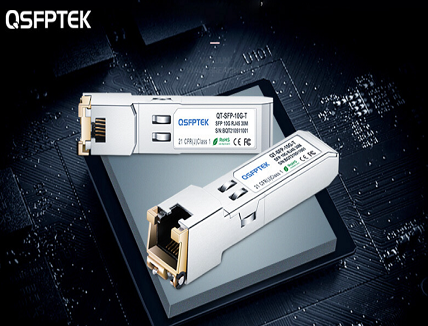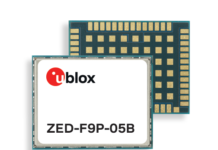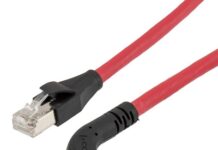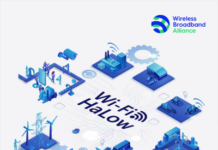
10G Ethernet Standard Introduction
Among all LAN protocols, Ethernet is the most popular in the market. Due to the high-speed form of Ethernet, it meets the needs of users for economical and reliable data network solutions. In addition, switched Ethernet shows its high stability. From twisted pair cable to all forms of optical fiber cable, it can operate normally in all kinds of physical media layers.
For large cities and large-scale applications as service providers, 10GB Ethernet can provide high-performance and economic links. These links can be easily managed through Ethernet tools. Through the use of wavelength division multiplexing (WDM) technology, hundreds, or even thousands of 10Gbps channels can be transmitted to a single optical fiber with different optical wavelengths or colors, The speed can be increased to terabit and above. 10G Ethernet is suitable for both fiber-optic and copper based network technologies, and its selection depends on the cost, distance supported, and complexity of implementation and configuration.
The original 10GB Ethernet standard was formulated by IEEE 802.3ae Committee and released in 2002. The standard is mainly based on optical fiber technology. Four kinds of optical receivers are selected: LR-1310nm series for single-mode fiber, ER-1550nm series for single-mode fiber, SR-850nm series for laser optimized multimode fiber (also known as OM3 fiber in international standards), LX4-1310nm wide wavelength division multiplexing (WWDM) for installed multimode fiber and single-mode fiber (see the table below).
| IEEE 10GStandard | TrancelverCost | Patch CordType | OM1Std 62.5μ | OM2Std 50μ | OM2 +Std 50μ | OM3LO 50μ | OM3 +LO 50μ | SM |
| 10GBase-S | LOW | MM | 33m | 82m | 150m | 300m | 550m | - |
| 10GBase-L | HIGH | SM | - | - | - | - | - | 10km |
| 10GBase-LRM | HIGH | MM | 220m | 220m | 220m | 220m | 220m | - |
| 10GBase-LX4 | VERY HIGH | MM/SM | 300m | 300m | 300m | 300m | 300m | 10km |
Comparing the four standards, 10GBASE-S has become the most popular and supported IEEE 802.3ae interface for data links with a length of 300m and covering enterprise vertical and a large number of other optical fiber layouts because of its lowest transceiver cost. The laser optimized multimode fiber series supporting this interface has also become a favorite in the market. In addition, miniaturized products using LC connectors have begun to appear, which can improve the density and save the space of electronic hardware.
10GBASE-T Applied In 10G Ethernet
Although the enterprise 10G Ethernet optical fiber electronic equipment is constantly maturing and accepted, compared with the copper interface, the cost of optical fiber electronic equipment is still high. Therefore, for short distances that require a large number of links, the need to develop copper based electronic devices for 10G Ethernet is very urgent.
For enterprise LAN applications, 10GBASE-T Ethernet allows network administrators to convert their Ethernet network from 10Mbps, 100Mbps or 1000Mbps to 10000mbps at the same interface through automatic protocol, so as to make full use of their investment advantages in Ethernet, because the network performance is improved.
QSFPTEK Cisco Compatible 10GBASE-T SFP+ Transceiver
For shorter lengths such as data links up to 100m that can cover connections in the data center and wiring cabinet, the optional products include 10GBASE-SR, CX4 and T, and the last two are electrical solutions. 10GBASE-CX4 only supports a length of 15m and is used with special cables, which are heavy due to the protective layer.
The exact cable length must be determined because the cable is not terminated in the field and is very expensive. CX4 is a unique choice for wiring cabinets to connect aggregation converters to edge converters. Ethernet’s dominant position in the field of data communication is partly due to its economic operation cost in twisted pair cable wiring, and each operation speed includes a twisted pair medium. Therefore, IEEE once again added a zero to define the 10GBASE-T standard, so as to achieve higher performance on relatively low-cost media and electronic interfaces.
Although the electronic equipment supporting 10GBASE-T has considerable complexity, the goal of this project is to achieve “at least 55m ~ 100m” operation on Category 6 or higher cabling with low-cost interface and acceptable power consumption level. As the chip designer further improves the technology and processing program, new technology must be developed to improve the shortest guaranteed distance, reduce the implementation cost and reduce the required power. 10G Ethernet technology is continuing to develop, supporting its wider application in the field of information processing technology. Blade servers, networked enterprise converters, video servers and other applications can now make full use of the speed of 10G Ethernet in storage, system backup, teleconference and monitoring systems. The development of technology has realized a series of necessary factors to attract major system developers, such as high density, low power and economy. The purpose of 10GBASE-T development is only to accelerate market acceptance and adoption.
Conclusion
In the final analysis, the vitality of 10GBASE-T depends on whether it has enough market in the face of many technical challenges. Historically, today’s situation is roughly the same as when 1000BASE-T was developed. 1000BASE-T has set standards according to the expected market. The early 1000BASE-T chip was only suitable for a few limited applications, but the processing technology must provide lower cost and lower power for a wide range of applications. Now, large-scale economic benefits can realize the wide popularization of 1000BASE-T.
QSFPTEK offers a wide range of copper cable, multimode and single-mode optical fiber solutions, enabling customers to choose the ideal 10G infrastructure to meet their network needs and ideas. By providing end-to-end solutions, QSFPTEK ensures that customers are not limited by any technical path and can flexibly respond to the changes and development of electronic equipment hardware.


















